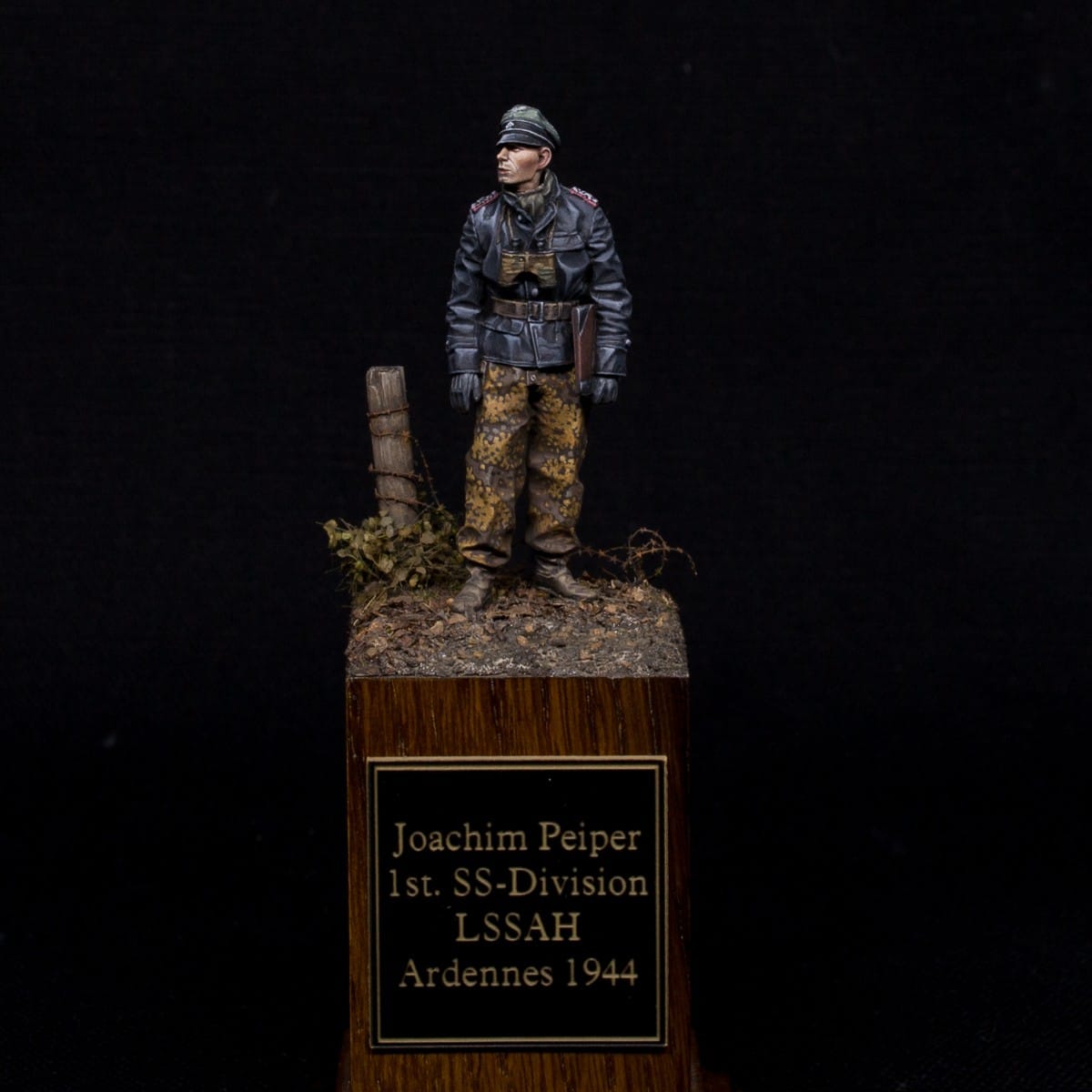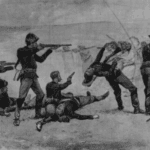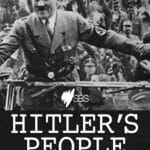Joachim Peiper, Heinrich Himmler’s favored adjutant, rose through the Waffen-SS ranks to become a notorious panzer commander implicated in the Malmedy Massacre during the Battle of the Bulge. His wartime actions, marked by both battlefield audacity and alleged brutality, remain a subject of intense historical scrutiny and exemplify the complex moral dilemmas of World War II. Despite being sentenced to death for war crimes, Peiper was released from prison and later murdered in France under mysterious circumstances, fueling ongoing debate and conspiracy theories.
From Berlin to the Battlefield: Peiper’s Early Life and SS Career
Born in Berlin in 1915, Joachim Peiper’s path intertwined with the Nazi regime early on. Joining the Hitler Youth and subsequently the SS in 1933, he quickly ascended the ranks, catching the attention of Heinrich Himmler. As Himmler’s adjutant, Peiper gained intimate knowledge of the SS inner workings and its twisted ideology. This proximity to power undoubtedly shaped his worldview and propelled his rapid advancement within the organization.
Peiper’s military career began with the invasion of Poland in 1939. He subsequently participated in the Battle of France (1940) and Operation Barbarossa, the invasion of the Soviet Union (1941), where he likely witnessed and participated in the atrocities of the Eastern Front. These early campaigns hardened him and contributed to his reputation for both military prowess and ruthlessness. His actions during this period, while less documented than later events, may offer crucial insights into the development of his brutal tactics.
The Battle of the Bulge and the Shadow of Malmedy
Peiper’s most prominent, and arguably most infamous, role came during the Battle of the Bulge in December 1944. Leading Kampfgruppe Peiper, a battle group composed of tanks and infantry, he spearheaded a daring thrust into Allied lines. While initially successful, his advance ultimately stalled due to logistical challenges and fierce American resistance. It was during this chaotic period that the Malmedy Massacre occurred, forever staining Peiper’s legacy.
On December 17, 1944, near the Belgian town of Malmedy, members of Kampfgruppe Peiper murdered approximately 84 American prisoners of war. This horrific act, which became known as the Malmedy Massacre, shocked the world and solidified Peiper’s reputation for brutality. While the exact extent of Peiper’s direct involvement remains a subject of debate, his command responsibility is undeniable. The massacre wasn’t an isolated incident. Other atrocities, including the murders of civilians in towns like Ligneuville and Stavelot, are also attributed to his unit during the Battle of the Bulge. These acts suggest a pattern of violence and disregard for human life.
The Post-War Reckoning: Trial, Imprisonment, and a Violent End
Following the war, Peiper was tried at Dachau for his role in the Malmedy Massacre and other war crimes. The trial itself was fraught with controversy, with allegations of coerced confessions and inadequate legal representation. He was initially sentenced to death, but this was later commuted to life imprisonment. His eventual release in 1956 further fueled outrage and highlighted the complexities of post-war justice.
After his release, Peiper sought anonymity in rural France, living under an assumed name and working for Porsche. However, his past ultimately caught up with him. In 1976, he was murdered in Traves, France. His house was burned down, and his body was found with gunshot wounds. The circumstances surrounding his death remain shrouded in mystery, with theories ranging from revenge killings by former French Resistance members to actions by communist groups. This violent end only added to the enigma surrounding Joachim Peiper.
The Enduring Enigma: Peiper’s Complex Legacy
Joachim Peiper remains a controversial and enigmatic figure. Was he a product of his time, swept along by the tide of Nazi fanaticism? Was he a ruthless opportunist who exploited the chaos of war? Or was he something in between? Understanding Peiper requires acknowledging the complexities of individual responsibility within the larger context of war and totalitarian regimes.
The ongoing research and debate surrounding Peiper’s life and actions underscore the enduring challenges of historical interpretation. While some argue that his culpability in the Malmedy Massacre may have been exaggerated, the weight of evidence suggests his command played a crucial role in the atrocity. His story serves as a stark reminder of the dark side of human nature and the devastating consequences of unchecked ideology. It also highlights the ongoing need to grapple with the complexities of war, justice, and the enduring quest for historical truth. Similar complexities surround other figures like Haile Mengistu Mariam, whose role in the Ethiopian Revolution continues to be debated. Further research and continued exploration of historical evidence are essential to gaining a more complete understanding of figures like Peiper and the turbulent times in which they lived.
- Unlock Water’s Symbolism: A Cross-Cultural Exploration - April 20, 2025
- Identify Black and White Snakes: Venomous or Harmless? - April 20, 2025
- Unlocking Potential: Origins High School’s NYC Story - April 20, 2025















